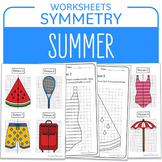73 results
Higher education algebra resources for SMART Notebook

Lines and Slope Jeopardy Review Game
This Jeopardy Smartboard game assesses the following skills
- types of lines (vertical, horizontal, positive and negative slope) and their equation formats
- calculating slope given two points
- finding x and y intercepts
- determining whether or not a point is on a line
About my Products:
While the PARCC assesses many of the mathematical practice standards, I aim to create many problems and activities that require students to apply the skills outlined in the performance level descriptors. I b
Grades:
3rd - 12th, Higher Education, Adult Education, Staff
Types:

How I Teach Converting From Standard-Form to Slope-Intercept Form
This is a 41 page lesson on how to convert an equation that is in Standard-Form over to Slope-Intercept form. The step by step details should help them to understand. There are plenty of practice problems along with answers.
Grades:
7th - 10th, Higher Education
Types:

How I Teach Factoring Trinomials (Leading Coefficient is Greater Than One)
This is a 30 page Smartboard lesson explaining how to factor a trinomial when the leading coefficient is greater than one. I use the slide and divide method in my explanation. The lesson guides the student step by step through the process followed by many examples. Some examples require taking out a common factor first. As always answer keys are included with every problem!
Subjects:
Grades:
8th - 11th, Higher Education
Types:
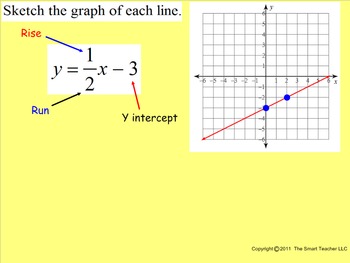
How I Teach Slope Part 4
This is a 48 page Smartboard lesson on how to graph linear equations. All types of linear equations are explained here. There are slopes that are fractions and slopes that are whole numbers. Sometimes the y intercept is missing and other times there is zero slope. There are plenty examples to work with and all contain the answer. Students have a graph and a dot so that they are able to plot a couple of points and then connect them to graph the linear equation.
Grades:
7th - 10th, Higher Education
Types:
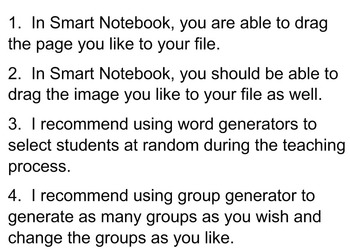
FREEBIE - Templates: Group Generator, Name Chooser, Timer, Activity, ... etc.
This Smart Notebook file contains tools that are helpful to use in managing the classroom. A "Group Generator" tool allows you to generate as many groups as you wish. A "Word Chooser" tool allows you to pick on a student for an answer at random. A "Timer" allows to manage your class time effectively. Different type of timers are also included such as firecracker. Also, for those who are teaching probability, an interactive die, spinner, and card are also available in this template file.
Si
Subjects:
Grades:
PreK - 12th, Higher Education, Adult Education, Staff
Types:

SmartBoard Lesson on Graphing Linear Inequalities
This is an Algebra lesson for the SmartBoard on graphing linear inequalities and systems of linear inequalities. This Notebook file starts with reviewing the inequality symbols and how to graph an inequality on the number line. It then moves on to the definition of a linear inequality and how to graph one on the coordinate plane. The steps to follow are clearly identified and several example problems are provided. The second half of this lesson gives problems about solving systems of linear ineq
Subjects:
Grades:
8th - 12th, Higher Education, Adult Education
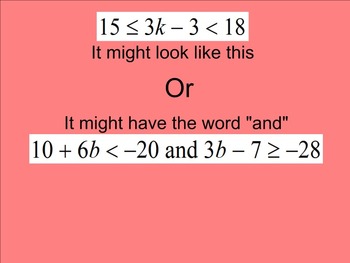
How I Teach Solving & Graphing Compound Inequalities
This is a 41 page Smartboard lesson on how to solve and then graph compound inequalities. The lesson guides you step by step how to solve and graph the "and" type and the "or" type. Plenty of explanation along with an abundance of practice. All practice pages include answers.
Grades:
8th - 11th, Higher Education
Types:
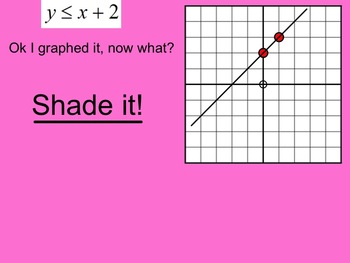
How I Teach Graphing and Writing Linear Inequalities
This is a 28 page Smartboard lesson explaining how to graph and write linear inequalities. The lesson includes step by step instruction along with multiple pages of practice. The practice pages also include the answers.
Grades:
8th - 10th, Higher Education
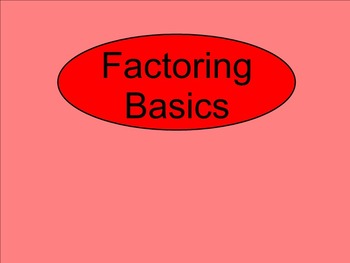
How I Teach Factoring Polynomials (Basic Factoring)
This is a 48 page Smartboard lesson explaining how to factor basic polynomials. The lesson starts with a review of the multiplication property of exponents and continues with a review of using the distributive property. Next it explains finding a GCF. The lesson then introduces factoring simple polynomials with 2 terms and progresses to 4 term polynomials. There are many practice pages with each one containing answers.
Subjects:
Grades:
7th - 10th, Higher Education
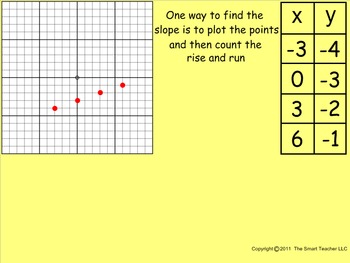
How I Teach Slope Part 3
This is a 28 page Smartboard file on how to find the slope of an x and y table. The lesson explains how you can plot the points to find the slope or you can use the change in y over change in x (rise over run) formula. Each practice page has a coordinate plate to help. There are plenty of practice pages and all include answers.
Grades:
7th - 10th, Higher Education
Types:

How I Teach Zero and Negative Exponents
This is a 25 page Smartboard lesson on how to solve problems containing zero and negative exponents. Some of the pages have interactive problems that move and demonstrate how to convert a negative exponent into a positive one. There are many pages of practice problems and all of them include the answers.
Subjects:
Grades:
8th - 11th, Higher Education
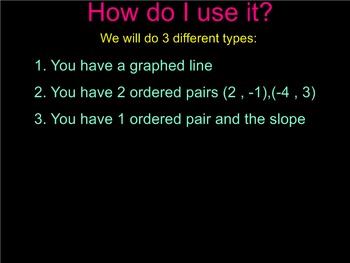
How I Teach Point-Slope Form
This is a 61 page Smartboard file covering how to write equations in point-slope form. There are 3 different styles used. One is when you know one point and the slope. Another is when you know 2 points. The 3rd one is when you have a line plotted on the coordinate plane. All three types have plenty of practice problems that include answers.
Subjects:
Grades:
8th - 11th, Higher Education
Types:

How I Teach Solving Systems by Graphing
This is a 20 page Smartboard lesson on how to solve systems of equations by graphing. The lesson gives step by step instructions and includes multiple practice pages. The practice pages also include answers.
Grades:
8th - 10th, Higher Education
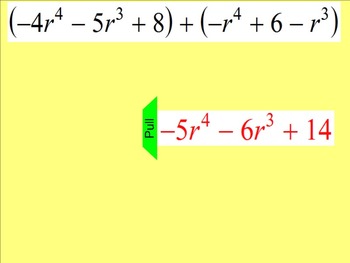
How I Teach Adding and Subtracting Polynomials
This is a 32 page Smartboard lesson covering how to add and subtract polynomials. The lesson starts out explaining what a polynomial is and includes sorting monomials, binomials, and trinomials. The lesson then shows how to add and subtract them. There are several practice pages and they all include the answers.
Subjects:
Grades:
8th - 11th, Higher Education
Types:
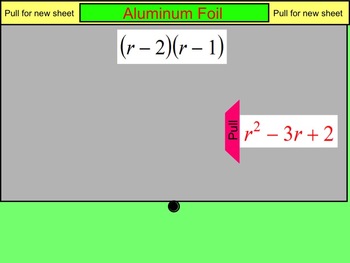
How I Teach Multiplying Binomials (Foil)
This is a 41 page Smartboard lesson that teaches how to multiply binomials using the "foil" method. The lesson contains several illustrations showing the steps needed. Next comes over 20 practice pages that look like they are writing on a piece of foil to help reinforce the concept of "foiling". All practice pages contain the answers.
Subjects:
Grades:
8th - 11th, Higher Education
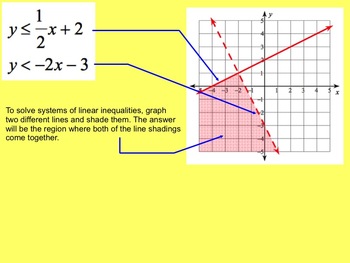
How I Teach Graphing Systems of Linear Inequalities
This is a 27 page Smartboard file that covers graphing Systems of Linear Inequalities. The lesson starts with explaining the use of dashed and solid lines and continues into several practice pages that include answers. Some of the inequalities are in slope-intercept form and some are in standard form.
Grades:
8th - 11th, Higher Education
Types:
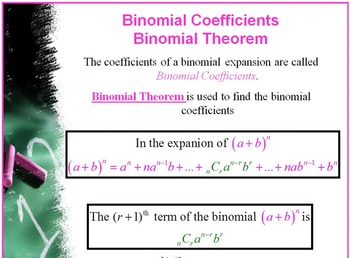
Binomial Distribution - The Binomial Theorem & Pascal's Triangle
In this Smart Notebook file, there are 19 pages which illustrate:
* Pascal's Triangle
* Using Binomial Coefficients in Pascal's Triangle
* Practice on completing Pascal's Triangle
* 2 different activities with questions on:
- Finding the coefficient of a term - 6 Questions (with a detailed answer to Question #1)
- Finding a term in a binomial - 6 Questions (with a detailed answer to Question #1)
* 10 questions with answer key on working with the Binomial Theorem. Those
Subjects:
Grades:
8th - 12th, Higher Education, Adult Education
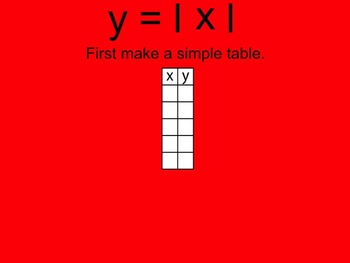
How I Teach Graphing Absolute Value Equations
This is a 19 page Smartboard lesson on how to graph absolute value equations. There are multiple step by step instructional pages. There are also plenty of practice pages that include answers.
Grades:
8th - 11th, Higher Education

How I Teach Factoring Polynomials (Special Cases)
This is a 47 page Smartboard lesson explaining how to factor special cases. The difference of two squares & perfect square trinomials with and without a coefficient of 1. This lesson guides you step by step explaining along the way. There are plenty of practice pages and as always they do include answers.
Subjects:
Grades:
8th - 11th, Higher Education
Types:
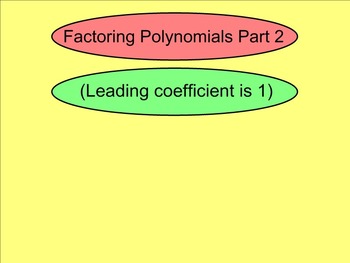
How I Teach Factoring Polynomials (Leading Coefficient is 1)
This is a 37 page Smartboard lesson teaching how to factor polynomials when the leading coefficient is 1. The lesson gives step by step instructions to guide the students along the way. The lesson includes many practice problems that include examples. Students should have no trouble factoring these by the time you get to the end!
Subjects:
Grades:
7th - 10th, Higher Education
Types:

How I Teach Parallel and Perpendicular Lines
This is a 50 page Smartboard lesson. The lesson gives step by step instruction starting with what does it mean to be parallel and perpendicular. The lesson continues by showing two equations and asking the question of parallel, perpendicular, or neither. At the end of the lesson the student has to graph a line through a point and either parallel or perpendicular to another line. This lesson like all of my "how I teach" lessons includes plenty of practice with answer to go with them.
Subjects:
Grades:
7th - 10th, Higher Education
Types:

How I Teach Solving Systems by Substitution
This is a 34 page Smartboard lesson over solving systems of equations using substitution. There are multiple pages of explanation along with several practice pages. Some of the pages have both equations in slope-intercept form and some of the pages have the equations in standard form. All practice pages include answers.
Subjects:
Grades:
8th - 11th, Higher Education
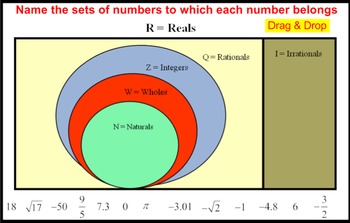
Classifying Real Numbers - Drag & Drop
The main page of this notebook file is the "Venn Diagram" representation of the relationship between the set of numbers.
In this file, students are required to "Drag & Drop" real numbers into their appropriate place on the venn diagram.
In another page, the same numbers are placed in a table (instead of venn diagram) and students are asked to classify each of the numbers.
I usually print the table and ask my students to fill it in before we go over the questions in class. You could ask
Subjects:
Grades:
7th - 12th, Higher Education, Adult Education
Types:

A.REI.1 Are the Equations Equivalent? How do you know?
** Please note: This presentation is for use with Notebook Software. You will need SMART Notebook to open this file or you may use express from SMART to view this document. http://express.smarttech.com/# **
This Smart Board lesson was motivated by my class and the Illustrative Math sample question for A.REI.1. My students understood how to solve equations but not that each step was equivalent to the one above (or below). They were simply missing the understanding the properties of equality.
T
Subjects:
Grades:
7th - 9th, Higher Education
Types:
CCSS:
Showing 1-24 of 73 results


